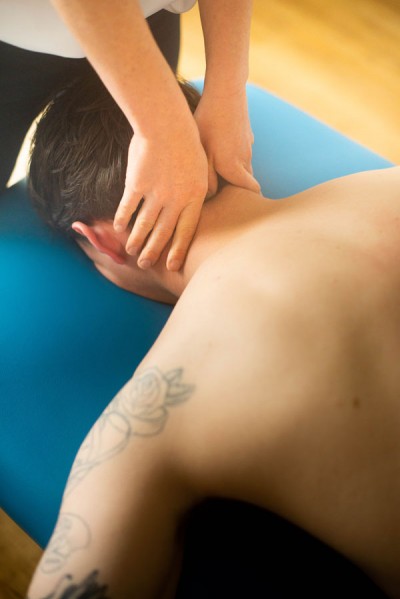Headache and Migraine Specialised Treatment
Physiotherapy for Cervicogenic headaches is a well-established component of physiotherapy, however treatment for other headaches such as migraines and tension type headaches are for many, outside their scope of practice. However, an extremely successful physiotherapy treatment approach has been developed in Australia. The Watson Headache ® Approach was established in South Australia by Dr Dean Watson, a physiotherapist who has specialised in treating headaches and migraines for over 30 years and completed his PHD in headache and migraine management. I have been fortunate to complete extensive training with Dean in Australia and I worked in the foremost specialist headache and migraine centre in Melbourne Australia with the mentoring of Roger O’ Toole, an extremely experienced and knowledgeable headache consultant. I am really excited to bring this physiotherapy technique to Sligo and to Ireland.
The Watson Headache ® Approach
 Through extensive experience and research Dean recognised a gap in understanding and treatment for headache and migraine sufferers. He understood that the neck was under diagnosed as the cause of headaches and furthered his research in this area. He was able to prove that 100% of tension type headache sufferers and 94% of migraine sufferers had their symptoms reproduced via specific points in their neck (Watson and Drummond, 2012).
Through extensive experience and research Dean recognised a gap in understanding and treatment for headache and migraine sufferers. He understood that the neck was under diagnosed as the cause of headaches and furthered his research in this area. He was able to prove that 100% of tension type headache sufferers and 94% of migraine sufferers had their symptoms reproduced via specific points in their neck (Watson and Drummond, 2012).
He then went on to prove that the Watson Headache ® Approach could impact and desensitise the brainstem, which is thought to be the underlying structure causing a large percentage of migraines (Watson and Drummond, 2014). The brainstem is the area of the brain that houses all the nerves for the head and the face. Specifically, an area called the trigeminal nucleus, which has been found to be overstimulated in all headache types whether it is migraine, menstrual migraine, tension-type headache, cluster headache and so on. The nerves from the upper three segments in the neck feed directly into the trigeminal nucleus which is also housing the nerves for the head and the face, therefore it stands to reason, it is appropriate to assess the neck in all headache and migraine sufferers.
References
Watson, DH., Drummond, PD. (2012), Head pain referral during examination of the neck in migraine and tension type headache. Headache; 52:1226-1235.
Watson, DH., Drummond, PD. (2014), Cervical referral of head pain in migraineurs: effects on the nociceptive blink reflex. Headache; 54: 1035-1045
Is your neck the cause?
This is why the Watson Headache ® Approach is essential when treating headaches and migraines because the assessment technique used, can established if your neck is contributing to your migraines.
What does assessment involve?
Initial physiotherapy assessment involves a comprehensive verbal and targeted physical assessment of your presentation in order to gain an understanding of your symptoms. Headache presents differently in each person, so allowing you to tell your story we gain valuable insight into how your particular headache or migraine behaves. With this understanding we can give you a more specific diagnosis, and set bench markers to assess your improvement.
A few key findings during examination are required in order for treatment to be warranted, if they are not found treatment will not be commenced. However, in 80% of assessments the three key elements are found deeming treatment suitable.
The first core element is to identify the presence of a minor fault in the top of the neck. The fault is thought to be a pressure problem between the second and third cervical vertebrae which causes the spasm of a small muscle under the base of the skull. Treatment of this muscle can give temporary relief, however treating the cause of the spasm is essential as this will give lasting rather than temporary results. This is done relatively easy with focused pressure on the offending vertebrae. This will correct the fault in the top of the neck and is an important indicator that treatment should work.
The next essential step is to identify whether this minor pressure fault is responsible for your symptoms. So selective stress is then applied to each of the upper cervical joints, which temporarily reproduces your typical head pain or associated symptoms. If this happens, the pressure is sustained and the referred pain most likely will subside after 20-30 seconds.
This reproduction and resolution of your symptoms confirms the involvement of the neck to your headache or migraine (in line with International Headache Society classification guidelines), allows us to make an accurate diagnosis, and gives us the authority to recommend physiotherapy treatment for your condition.
What does treatment involve?
This physiotherapy treatment is fast, safe, natural and extremely effective, addressing your symptoms as well as the underlying cause. If the approach is deemed appropriate for you, you will enter into an initial physiotherapy treatment block, which consists of four treatment sessions over two weeks. If your symptoms are not responding, your treatment will be ceased.
If there is significant improvement you will tend to require another 2-3 sessions although this can vary. However, the idea is that you will be discharged and manage your condition independently, without ongoing endless treatment. You will be also given advice on posture and provided with exercises. Sometimes individuals will require pilates as they will have deconditioned their postural muscles due to the ongoing pain they have suffered. Treatment varies for everyone and while this approach is effective for most people, there are a minority of cases for which treatment is ineffective.


